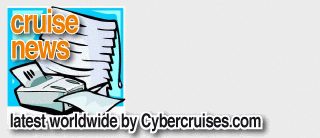A Special Report from the Cruise Examiner: Why And How Canada Closed The Alaska and New England Cruise Trades For 2020
 by Kevin Griffin
by Kevin Griffin
Actions by Canada have now effectively cancelled the 2020 Alaska and Canada and New England cruise seasons by banning cruise ships from operating into Canadian ports until November 1, 2020. An earlier ban had already been enforced in March, which was now simply being extended. Prohibited vessels are defined as having overnight accommodation for more than 100 persons. The order came from Transport Minister Marc Garneau. The reason given by Transport Canada is to close a potential line of infection and protect its population from Covid-19.
THIS WEEK’S STORY
Why And How Canada Closed The Alaska and New England Cruise Trades For 2020
Canada’s ruling last week that it was extending its ban on all cruise ship calls into Canada was portrayed as a matter of self-defense. The background statistics below show what this means.

As a tourism spokesperson for one Canadian province told The Cruise Examiner, “with millions of cases of Covid-19 right across the border and Canada’s own infection more or less under control, do you think we’re going to let them in?”
While commerce and commuters are allowed, the Canada-US border remains closed for leisure travel while cruise commerce is now banned from its ports.
Competition has effectively been taken away from Canadian ports by the federal government, which has arbitrarily decided to bring matters into its own hands, even though it no longer runs the country’s port.
Canada’s ports are now nominally run by local port authorities, although often on federally-owned land left over from the days of the National Harbours Board and its successor Ports Canada. Most Canadian ports have now been privatised or commercialised.
This Canadian decision has effectively gutted the Alaska season, whose ships rely on calling at Canadian ports to comply with US cabotage regulations and the Canada and New England season, which is also dependent on international itineraries.
Ships sailing round trip from Seattle rely on at least one Canadian port, usually Victoria, to allows their voyages to comply with US coasting law. Similarly, ships sailing between Alaska and Vancouver rely on the latter port to ensure that they are offering international itineraries.
Ships sailing round trip from Vancouver comply as their Alaska calls bring the into the United States.
On the east coast, the combination of US and Canadian ports used to make it easy to assemble a variety of international cruise itineraries.
But the only way to run a New England itinerary now, with Canadian ports banned, would be to call at St Pierre et Miquelon, two French islands off Newfoundland.
But this is impractical as the French islands are three-and-a-half days steaming away from Boston and four and a half days from New York, with no ports of call possible in either direction!.
Thus has the whole Canadian cruise market, as well as its US corollaries been closed for 2020!
(Kevin Griffin is managing director of The Cruise People Ltd in London, England. For further information concerning cruises mentioned in this article readers can visit his blog)





